The Group of Eight at Galeri Puteh
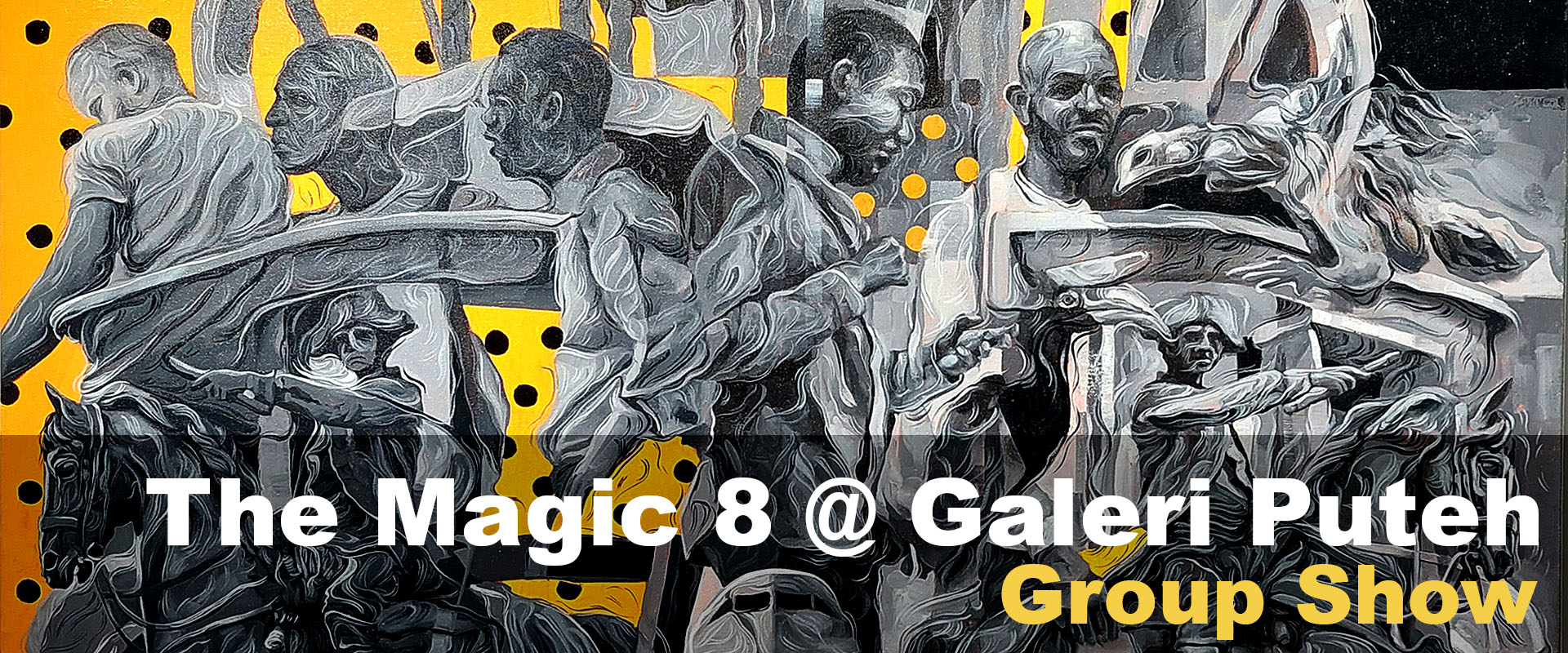
On the 22nd of July, Galeri Puteh opened a show featuring eight meteoric young artists at its sprawling Bangsar space on the third floor of the Eco City Mall. Presenting several works each were the following artists: Syahmi Jamaluddin, Putra Nasri, Faiz Mahdon Fafa, Fakhriq Zulkifli, Haziq Syawal, Hidyat Arshad, Nik Mohd Shafiz, and Syukur Rani.
Fresh off their inclusion as two of thirteen selected for the 2023 MEAA emerging artists award are Syahmi Jamaluddin and Putra Nazri. Syahimi presents a set of collage works on canvas in predominantly blacks and gray tones made with charcoal, acrylic and silkscreen ink, while Putra Nazri dominates an entire wall of the show with his soaring abstract expressionist canvasses featuring bold, contemporary palettes that express the growing confidence of the young artist.

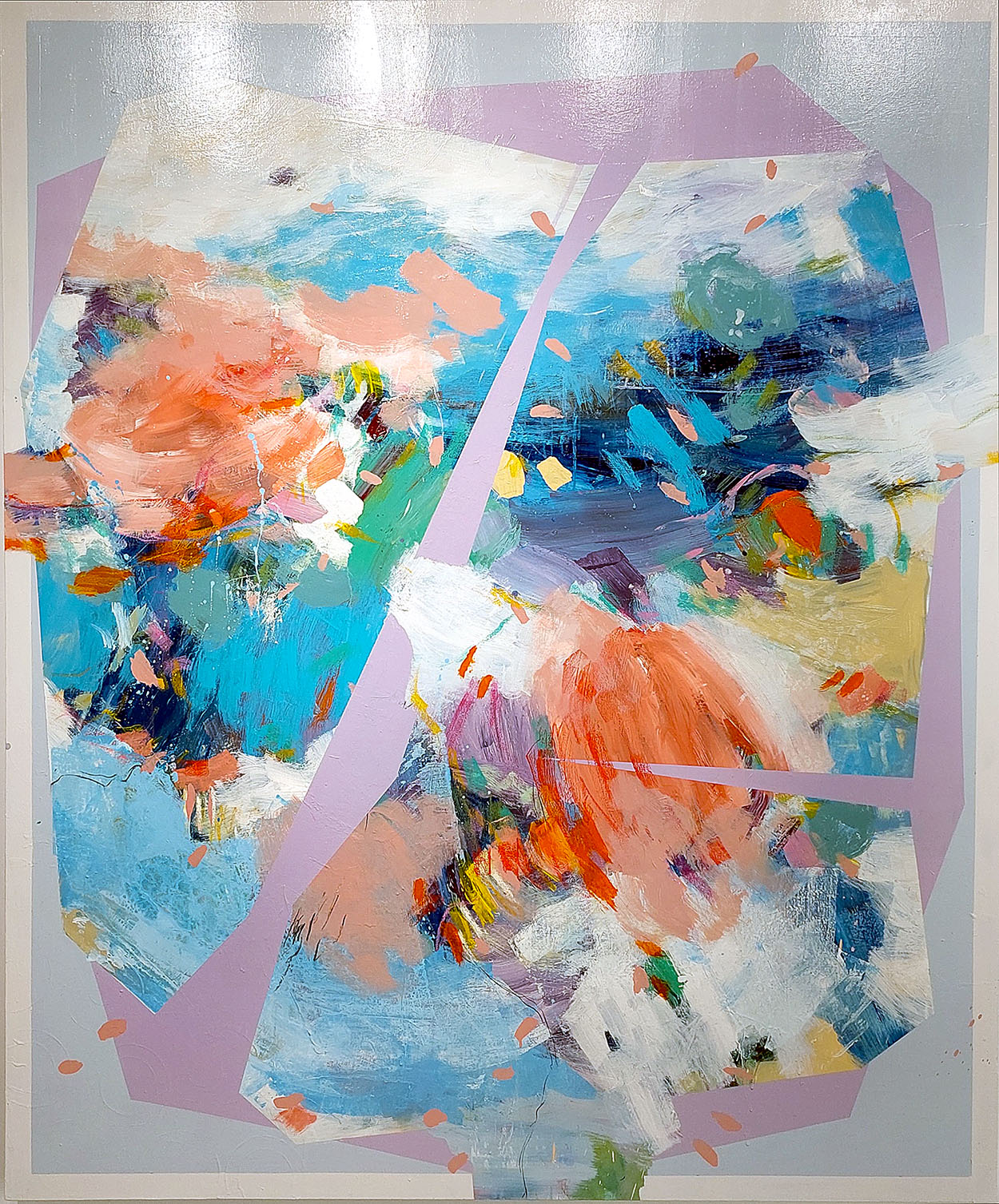
The gallery’s marketing material on Instagram features a black eight-ball commonly used for playing pool to represent the eight participating artists. Artist Amar Shahid Salehudin went one step further by connecting that ball to a similar-looking Magical 8 Ball commonly used in the world of fortune-telling:
“What an appropriate metaphor for the current collection of artists. Eight artists with wildly varying styles born out of the Social Media age, all vying for attention on their canvasses. Their struggle for excellence is akin to wishing on a random message on a Magic Eight Ball – a general statement that at the same time is hoped to bring forth a magical conclusion.” Amar continued, “These artists are a product of today’s bombardment of images and references. The art scene is now heading towards a common denominator, and it is up to the artists to make themselves stand out and produce the magic.” - Amar Shahid Salehudin.
Indeed, in any show featuring artists predominantly under the age of 35, there are detectable technical and contextual approaches that most definitely are influenced by the prevalent societal “style” into which these artists have been born, raised, and trained. With our lives now largely engulfed by ubiquitous technology, the daily or weekly information cycles of yesteryear have succumbed to a perpetual onslaught of stories, images, movies, and graphic explosions blatantly designed to steal viewers from one stream to another 24/7.
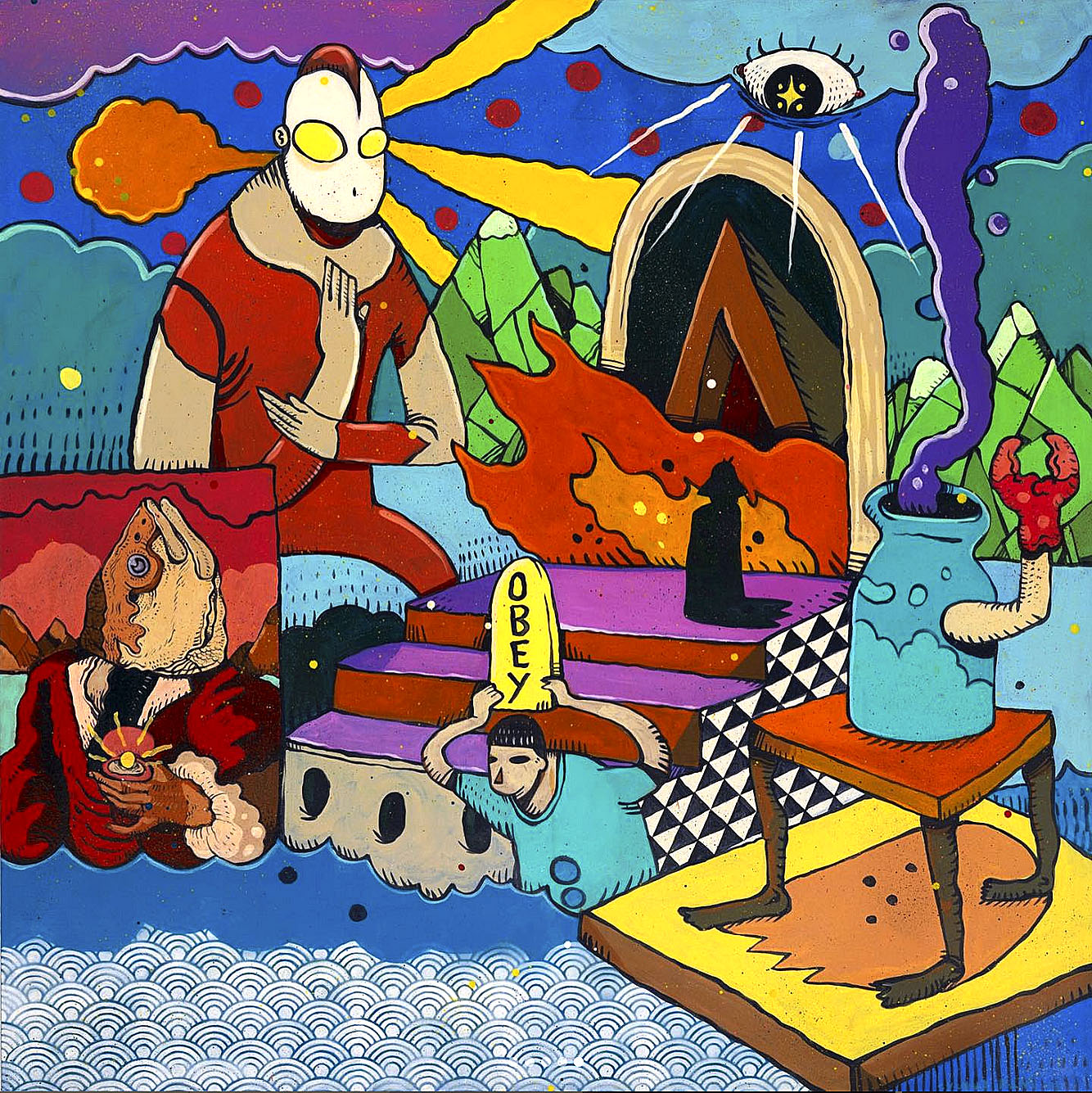
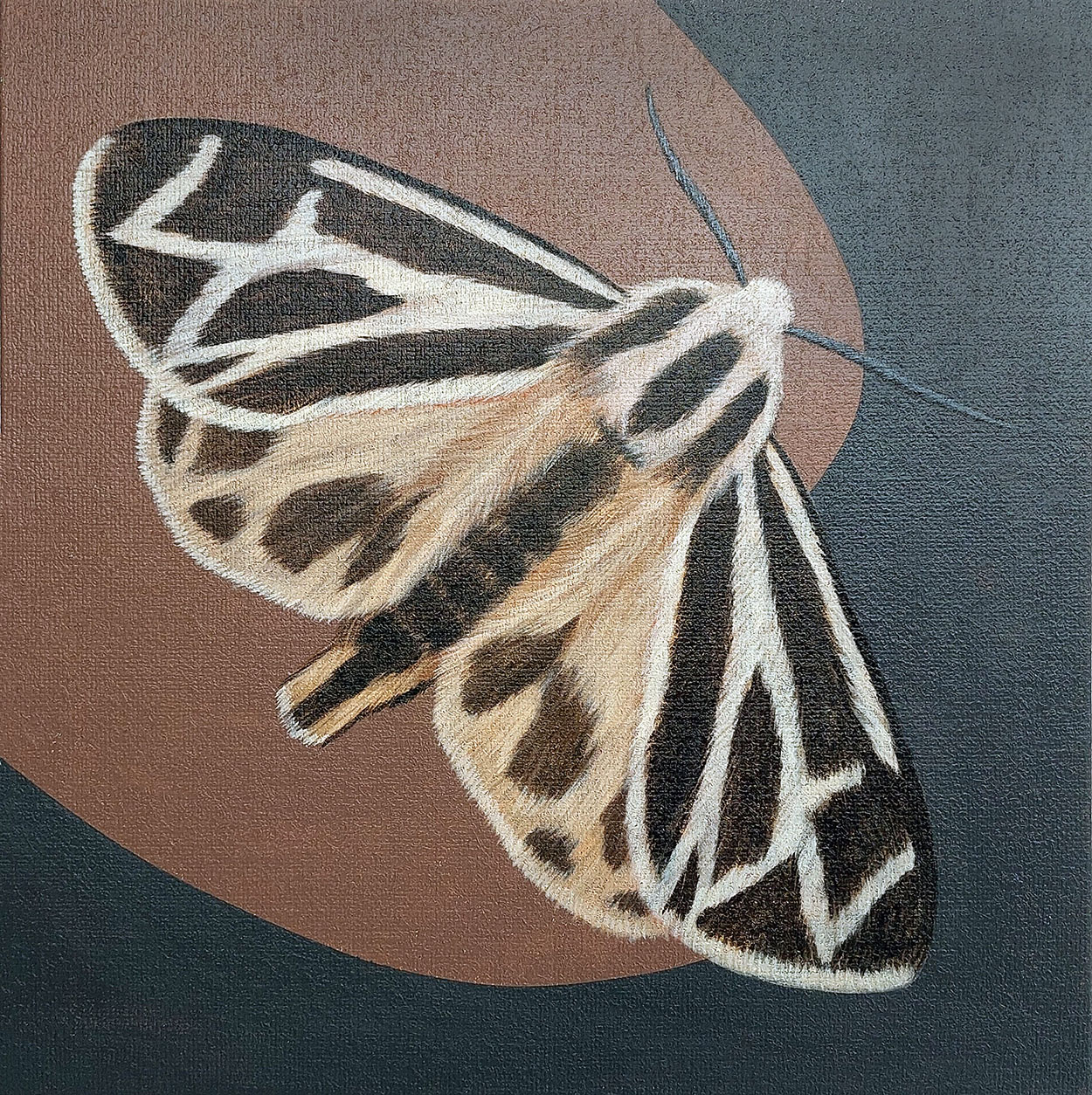
This paradigm shift in how information is introduced and refreshed has been manifested in several different ways by visual artists. While the initial connotation of this blitz might appear negative, it actually presents opportunities like this Group of 8 exhibition to incorporate not only several methods of approaching and depicting sensory overload but also how vaguely defined movements within the overarching scope of contemporary art have continued to be solidified over the past two decades. Some, like maximalism, all-over compositions, and hybrid surrealism have roots as far back as the 15th century with European artist, Hieronymus Bosch. Equally prevalent are returns to more recent spins on trends from the second half of the 20th century, including revitalized pop and kitsch, technology-influenced collage, multi-media geometrics, new media, and the incorporation of photos, paint, and physical objects similar to the combines of several prominent artists working in New York during the 70s. In short, there are endless possibilities for extending the visual art canon with innovative methods while still building upon the vast base of modern art history.
A relatively new trend was rejected outright by previous generations of artists but has since become almost mandatory. I refer to the overtly commercial yet clever incorporation of artistic branding through recognizable personal style elements, consistent palettes and form choices, or repeatable symbology that can be utilized to make a body of work immediately identifiable in the latest tsunami of paint and pics.
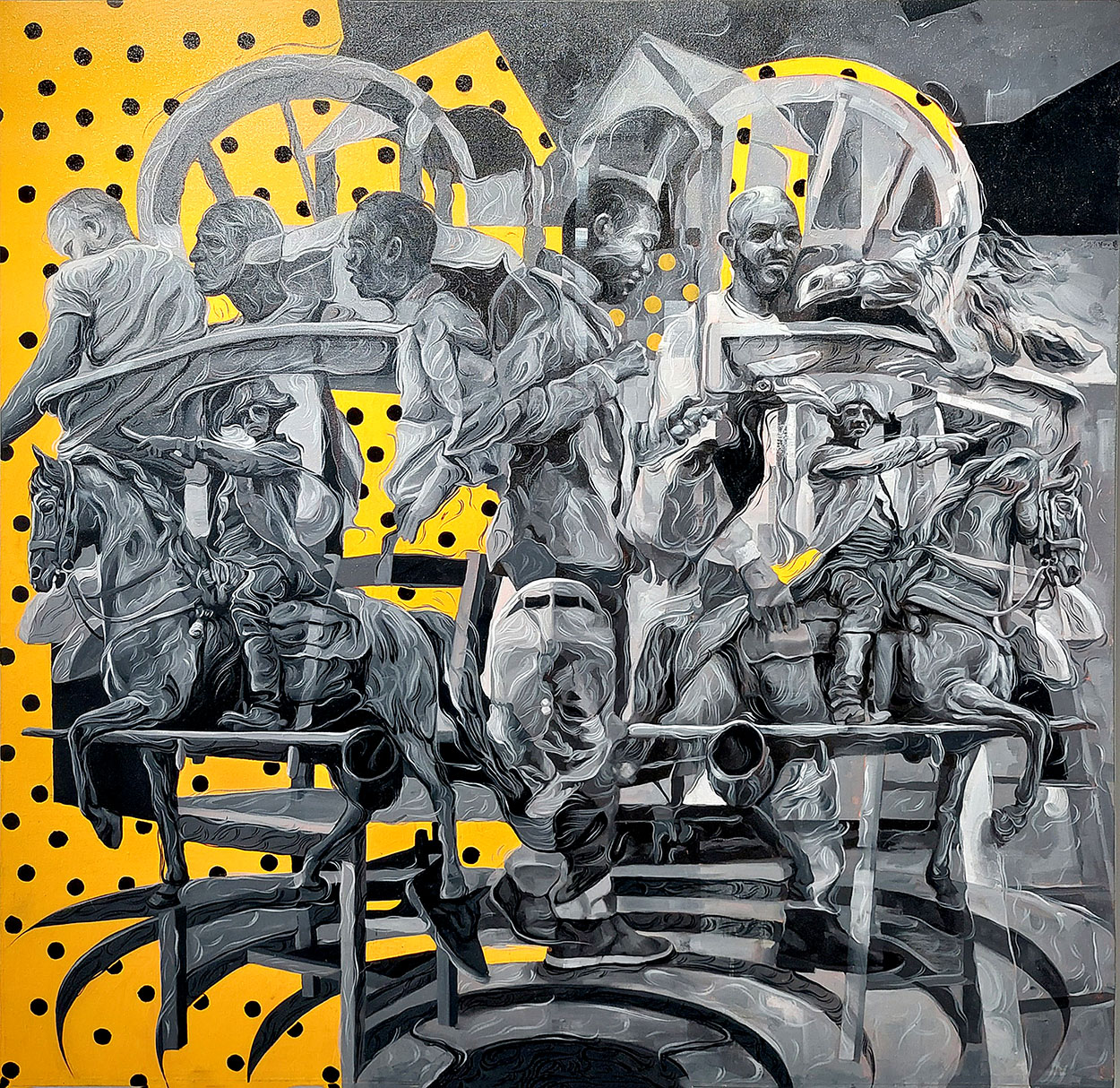
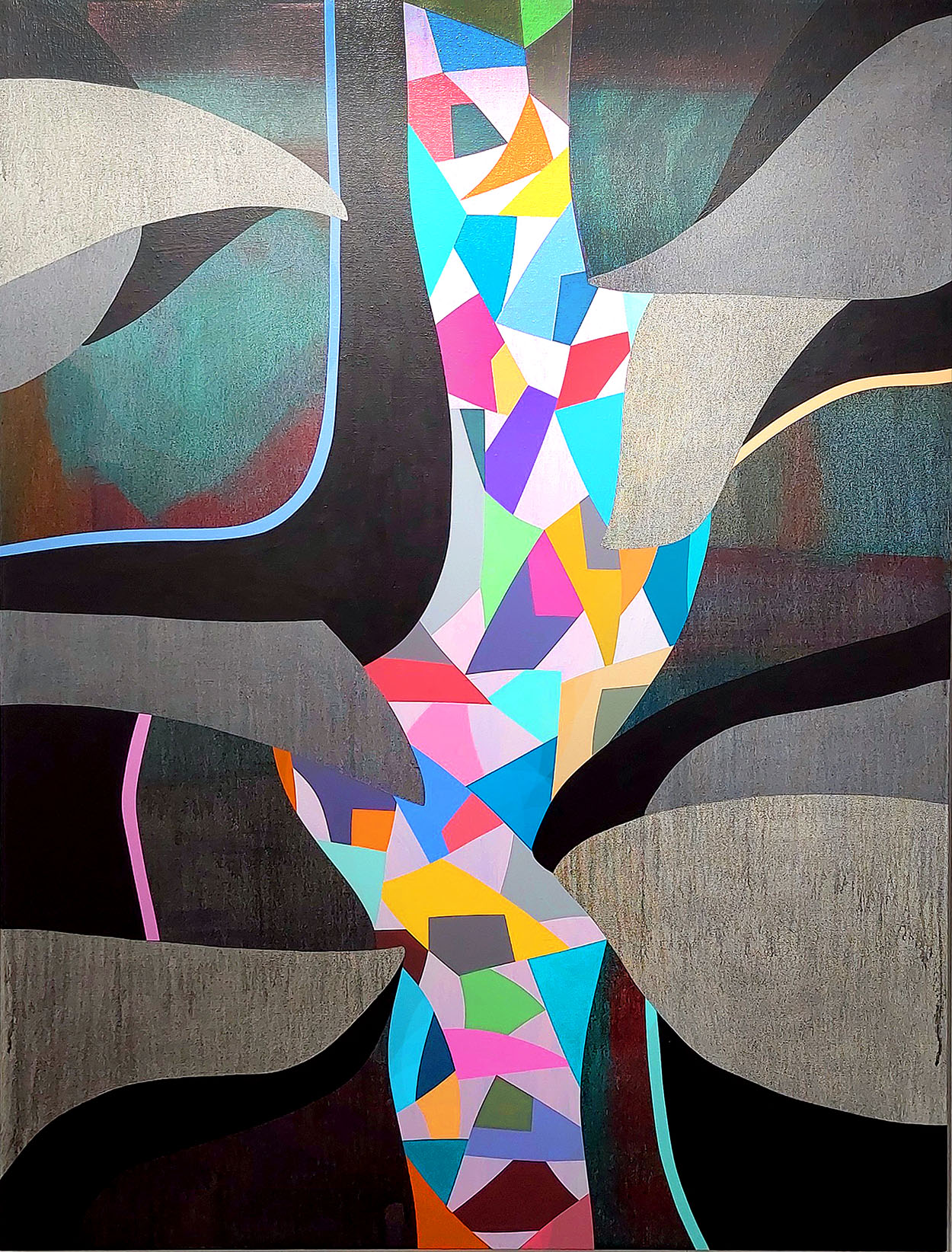
So what are some of the telltale signs of artists working in the present environment?
a) In attempts over the past few decades that border on the paradoxical, early digital art adopters tried to make their works appear more painterly, no doubt a holdover from the 20th-century dark ages when the art industry gatekeepers steadfastly insisted on the need to create rubrics for evaluating computer-aided art before giving digital artists their blessing. Today, the more common choice is to openly merge digital and analog elements, including styles adopted from the graphic arts industry that are now widely used by 2D painters. For example, in collage work, artists no longer mask seams and joints. Instead, they emphasize and delineate elements from each other on purpose rather than create uniform compositions. This less-refined and de-skilled trend dates back to the 60s and 70s, long before the age of MTV graphics and music posters. Today it is not only widely accepted but also coveted in the visual fine arts market.
b) Painters of expansive all-over canvasses traditionally created depth through shadowing, correct scaling and careful control of each layer to ensure that an element from the background wouldn’t appear to be in front of something in the foreground. Today, visual artists employ layering similar to a graphic artist builds Photoshop comps for media layouts with dozens of adjustment layers intermixed with visual components. Depth and complexity are increased by letting the visual elements intertwine and emerge from within and behind each other. A great example of this method is gray sections of the works by Nik Mohd Shahfiz where layers of objects and elements are allowed to seep through each other, thereby yielding richer, deeper scenes dripping with intrigue.
c) The trend to create fragmented elements in works continues. Subjects are cut, staggered, and overlapped to enhance compositional illusions while speaking directly to the strains of image overload in the early 21st century and the pace at which societies are expected to absorb far too much visual data in far too little time and space. We often miss more than we see, and what we actually see can be distorted. Roots for this trend can be found as far back as the early 20th century Dada movement, but contemporary artists are continually adding new twists to expand upon the idea. Examples in this exhibition can be clearly seen in the works of Haziq Syawal and to some extent the paintings of Fakhriq Zulkifli, Hidyat Arshad and Putra Nasri. This is one approach where digital creation would make the process simpler and faster, but credit goes to the painters in this group who painstakingly deploy fragmentation in their paintwork. In short, it’s not easy to maintain properly proportioned subjects when painting them as subsections of the whole.
d) Portions of imagery bordering on photographic are now frequently incorporated into more expansive mixed-media compositions, not unlike several 20th century masters who used clips from newspapers and magazines as well as their own photographs. Today, many artists employ any of several digital image or photo transfer techniques while others incorporate traditional printing elements very effectively, including screen-printing, litho, and serigraphy. Utilizing the screen-printing method to great effect in this exhibition is one of our favorite emerging local artists, Syahmi Jamaluddin.
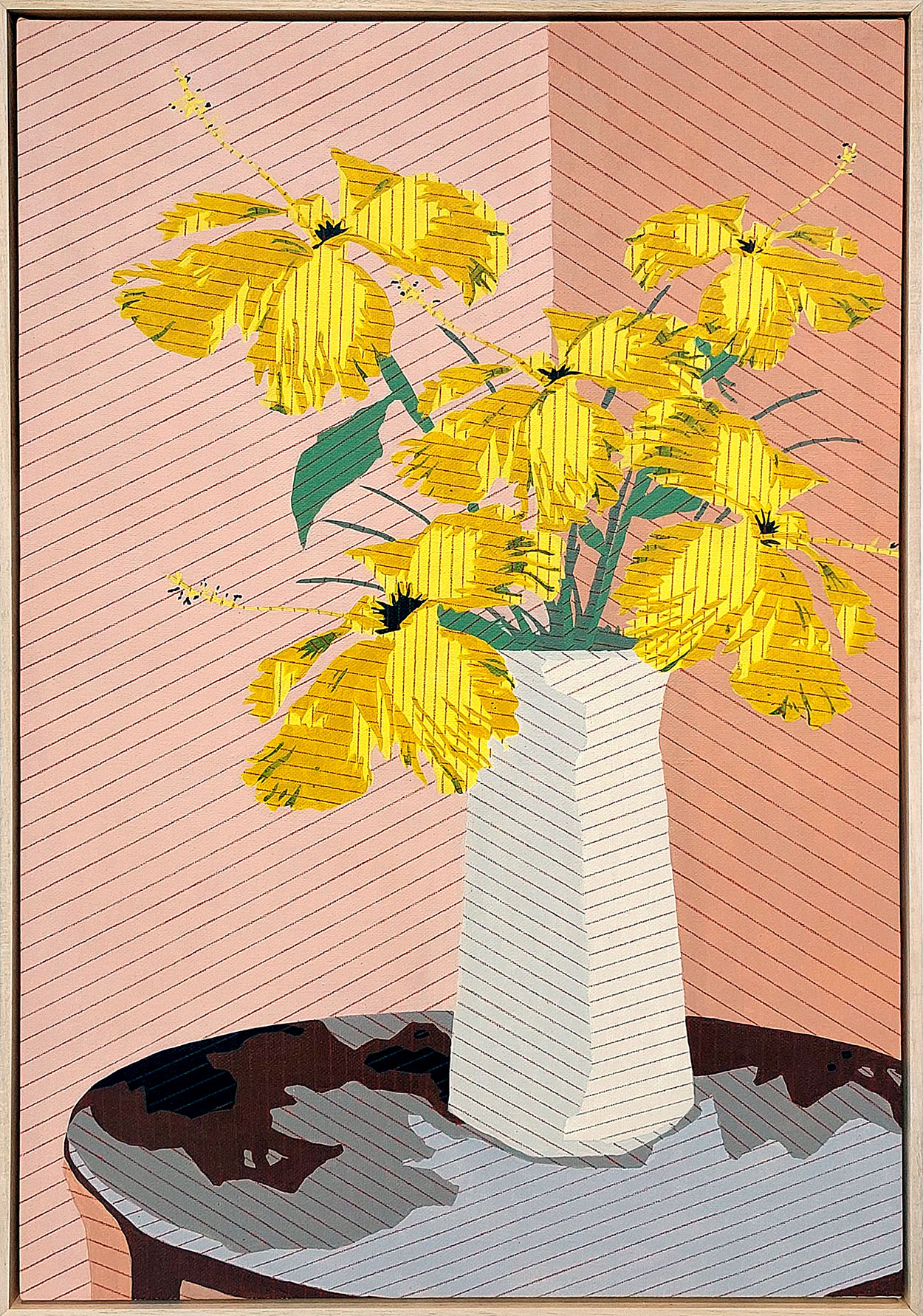
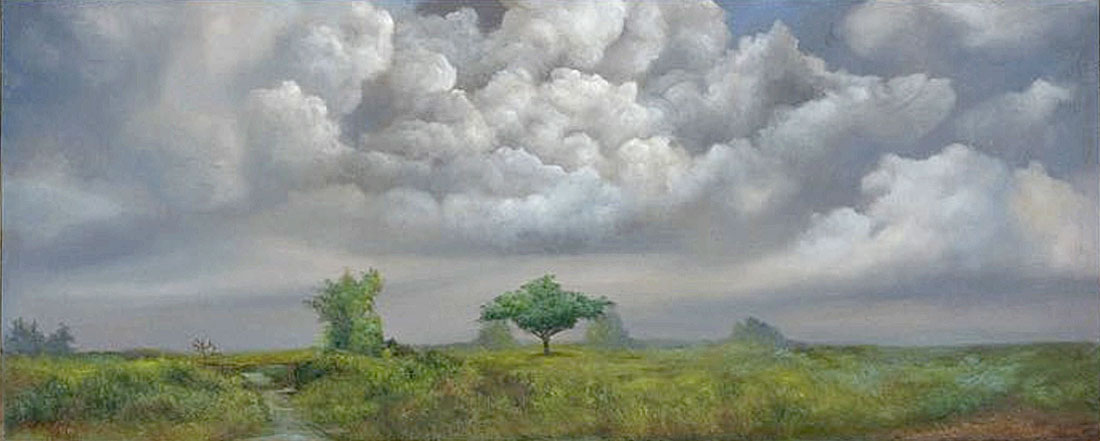
At first glance, it’s fair to question how the more traditional panoramic landscape paintings of Faiz Mahdon Fafa blend into a contemporary collective such as this. The small, subdued oil paintings are calm and seductive, far from the loud graphic explorations of many of the other exhibited works. Nevertheless, Fafa’s works always offer intriguing compositions, with some bordering on the surreal based on seemingly misplaced objects that maintain focus and positions of dominance in otherwise predictably bucolic scenes. In Eight, Fafa's works serve as a pivot or counter point, a juxtaposition of one artist’s steadfast approach that has not been vacuumed into the sensory overload of the mainstream.
Haziq Syawal works with acrylic on jute using animals, insects and contemporary/pop culture references combined with graphics and fragmented multi-imagery compositions in what have been called “collective experiences.” Hidyat Arshad uses organic forms and patterns to approach the concept of left vs. right brain’s functionality and power struggles. Nik Mohd Shafiz presents several oil on canvas works from the artist’s Monumental Series. They feature an array of statues, horses and figures from different walks of life in multiple shades of semi-transparent grays, all inter-layered. Gold and black polkadots remind viewers of Kusama’s recent Vuitton campaign. In this case, they serve to balance contemporary graphics with more traditional painting expressions.
Syukur Rani presents several large format works featuring comic-like fashion and mythical figures that are anything but cartoonish in their seriousness. The referential symbolism, maximalism, all-over compositions, and pop/surrealist underpinnings lean heavily on the zeitgeist and blend seamlessly into the overlapping imagery overload style that is prevalent among the works of young artists of today. Like much of the artist’s previous work, they can be overtly political and cynical. Nevertheless, they remain highly relevant in a world trying to grasp the ramifications of perpetual caste systems, growing income inequality, cultural conflicts, identity politics, and global political hegemony. Lest we forget, topical work that hits nerves often becomes more memorable for the statements than for the aesthetics, even when the latter is fun, vibrant, and directly relatable. The references come fast and furious, from the ‘Obey’ sign, a powerful hand heaving lightning bolts from above, the recurrent watchful Orwellian-like eye, and a mustached man with a dollar sign on his suit coat proclaiming the “Boss is Watching.”
The eight-person exhibition is well worth the short trip to Bangsar. It can be viewed at Galeri Puteh until the 13th of August. For more information, please contact the gallery directly.
All Artworks © Respective Artists, Images: AF at Opening 22/07/2023
.